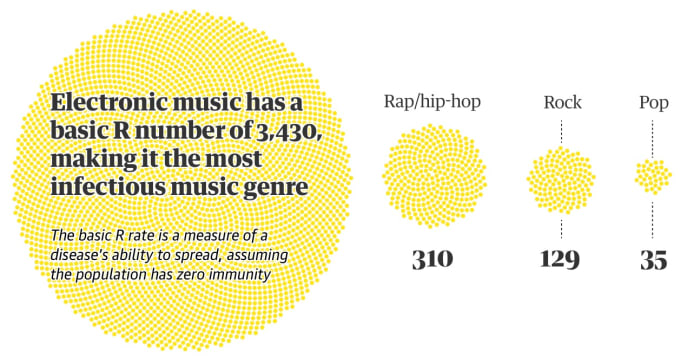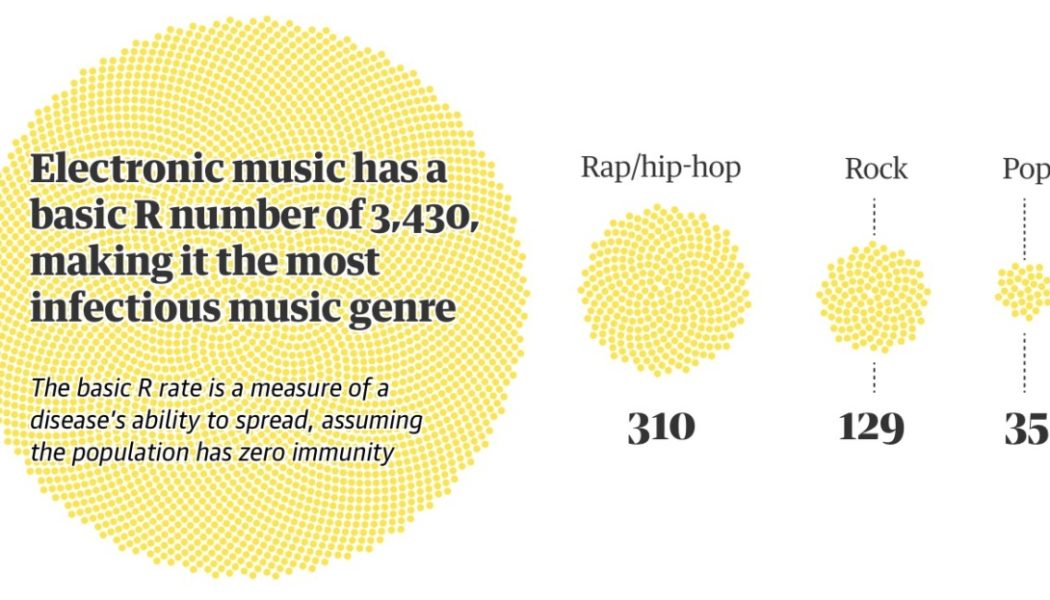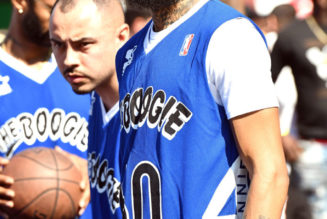The beat just got sicker.
A new mathematical study has found a close resemblance between the spreads of epidemic disease and popular music, suggesting they gain traction through similar methods. Electronic music, researchers concluded, proved to be the most infectious of all.
The Guardian reported that the study used a standard numerical model of epidemic disease, the SIR model, as their starting point, testing it against song download trends from 2007 to 2014 in the UK. The formula passed with flying colors. It described these music trends just as well as it did the spread of disease.
“It supports the idea that both music and infectious diseases depend on social connections to spread through populations,” said Dora Rosati, the study’s lead author. “The big difference is that for songs, it doesn’t necessarily have to be physical contact.”

Researchers now know that music popularity spreads through social contact and connections—just like disease. EDM, they found, is the most infectious genre of all.
The Guardian/Dr. Dora Rosati at McMaster University in Hamilton, Canada
Recommended Articles
Rosati’s team also went on to calculate different genres’ basic reproduction number, which describes how easily a virus can spread through a population. Electronica took the cake with a whopping estimate of 3,430. That’s more than 10x than that of rap and hip-hop, which came in as the second most infectious genres with a number of 310.
For reference, the basic reproduction number of COVID-19 falls somewhere between six and seven, according to biologists at the Scripps Research Institute.
“The reason why we might see some really sky-high R0s for songs is that you can just make a tweet and you have already infected a hundred people,” explained Dr. Thomas Rawson, a disease modeler at Imperial College London. “You can spread a song disease far quicker than you could an infectious disease.”
“Maybe what those numbers are telling us is that electronica fans tend to be more passionate about their favorite songs,” Rosati added. “Or maybe the social network of electronica fans is more strongly connected.” Tell us something we don’t know.
You can read the full study, published in Proceedings of the Royal Society A: Mathematical and Physical Sciences, here.










